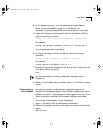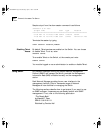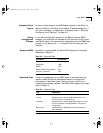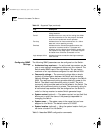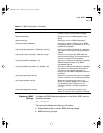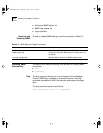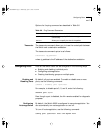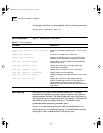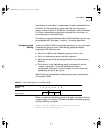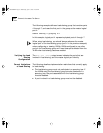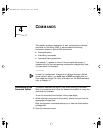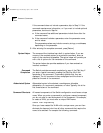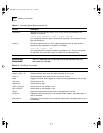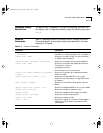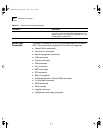
Load Sharing 3-15
Load sharing is most useful in cases where the traffic transmitted from
the Switch to the load-sharing group is sourced from an equal or
greater number of ports on the Switch. For example, traffic transmitted
to a 2-port load-sharing group should originate from a minimum of
two other ports on the same Switch.
This feature is supported between Switch 9000 Switches only, but may
be compatible with third-party “trunking” or sharing algorithms.
Configuring Load
Sharing
To set up the Switch 9000 to load share among ports, you must create
a load-sharing group of ports. Load-sharing groups are defined
according to the following rules:
■ Ports on the Switch are divided into groups of two or four.
■ Ports in a load-sharing group must be contiguous.
■ Valid port combinations are distinguished by the outlined boxes in
Table 3-8.
■ The first port in the load-sharing group is configured to be the
“master” logical port. This is the reference port used in
configuration commands. It can be thought of as the virtual port
representing the entire port group.
Table 3-8 shows the allowable load-sharing port group combinations
for the Switch 9000.
When you define a load-sharing group, you assign a group of ports to
a single, logical port number. To enable or disable a load-sharing group,
use the following commands:
enable sharing <master_port> grouping <portlist>
disable sharing <master_port>
Table 3-8 Port Combinations for the Switch 9000
Load-sharing
Group
1 2 3 4 5 6 7 8
4-port groups x x x x
2-port groups x x x x x x
SW9000.BK Page 15 Wednesday, April 1, 1998 11:00 AM



